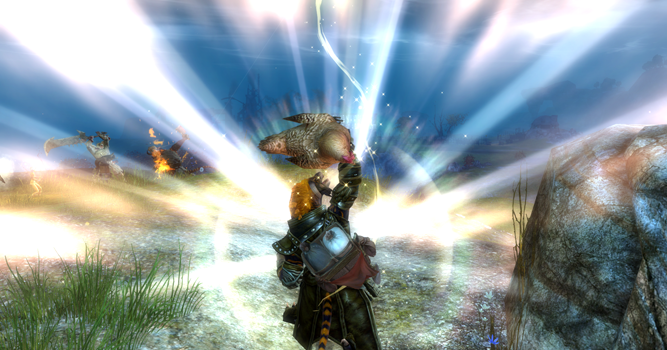Guild Wars 2 Terminology: Secondary Attributes
 In Guild Wars 2, secondary attributes work a little differently than primary attributes. First off, while available to all professions, they do not increase as you level up. You are also less likely to see them modified by armor, weapons, or consumables: they are increased mainly by adding points to their respective trait lines. And as with primary attributes, secondaries also have alternate names, but they are used much more in trait and skill descriptions.
In Guild Wars 2, secondary attributes work a little differently than primary attributes. First off, while available to all professions, they do not increase as you level up. You are also less likely to see them modified by armor, weapons, or consumables: they are increased mainly by adding points to their respective trait lines. And as with primary attributes, secondaries also have alternate names, but they are used much more in trait and skill descriptions.
Let’s start off with boon duration. Boon duration increases the length of all boons applied by your character; it does not affect any boons applied by other players. Boons are positive effects applied to a character, also commonly referred to as buffs or (in Guild Wars) enchantments. Boons are almost exclusively limited in time and this is where boon duration comes in. It increases the length of all boons with the exception of aegis, which doesn’t stack, and might, which stacks in intensity not duration. The secondary name of boon duration is “concentration.”
The next attribute is condition damage: it increases all damage done by conditions. Conditions are negative effects that can be added to a character and are the opposite of boons. There are only four conditions that do actual damage. The primary attribute power increases damage but does not increase or interact with condition damage. Condition damage is sometimes called “malice.”
The third attribute I am covering is condition duration. It is really straight forward: whenever there is condition damage being applied, it increases the time that damage is applied. It is referred to as “expertise” in some places in-game.
Next up, we have critical damage. Where precision increases the base multiplier for critical damage to happen, the critical damage attribute increases the resulting damage. Critical damage, also called “prowess,” is easy to calculate compared to most of the other attributes. For each point in critical damage, you add one to the base critical damage modifier. The base modifier is 150 percent.
The final attribute is healing power. This is a big one as it can significantly change how effective your healing skills are. How healing power is calculated is quite complicated: different healing skills are affected by healing power by different amounts. Each skill has a coefficient that it multiplies healing power by to determine how much it affects healing. Healing power also affects regeneration. It’s alternate name is “compassion.”
Secondary attributes are often forgotten when players are planning out their character. They add more depth to the system, allowing for build types and, in some cases, can become the main focus of the build.



No Comments Yet.